
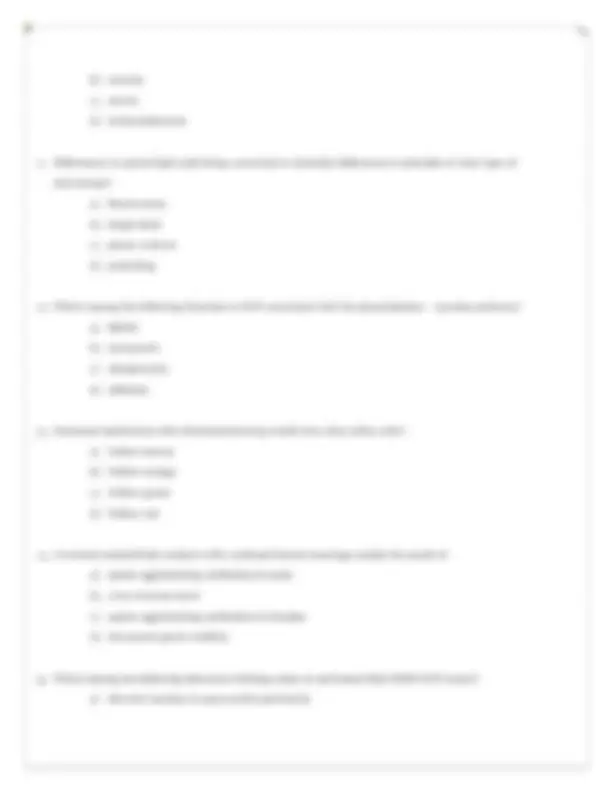
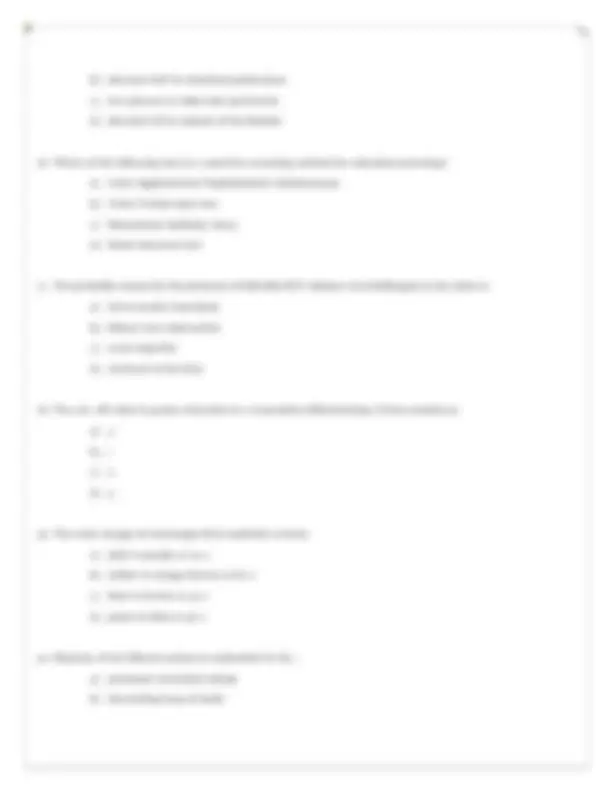
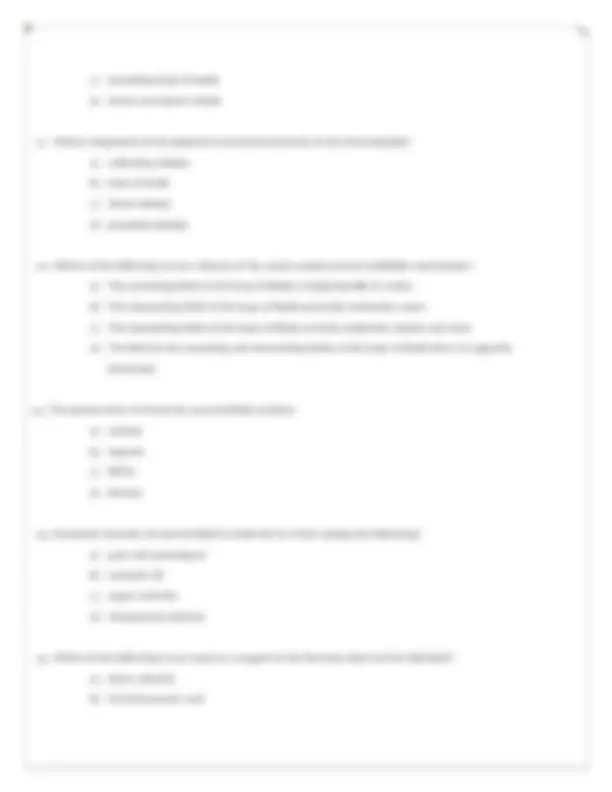
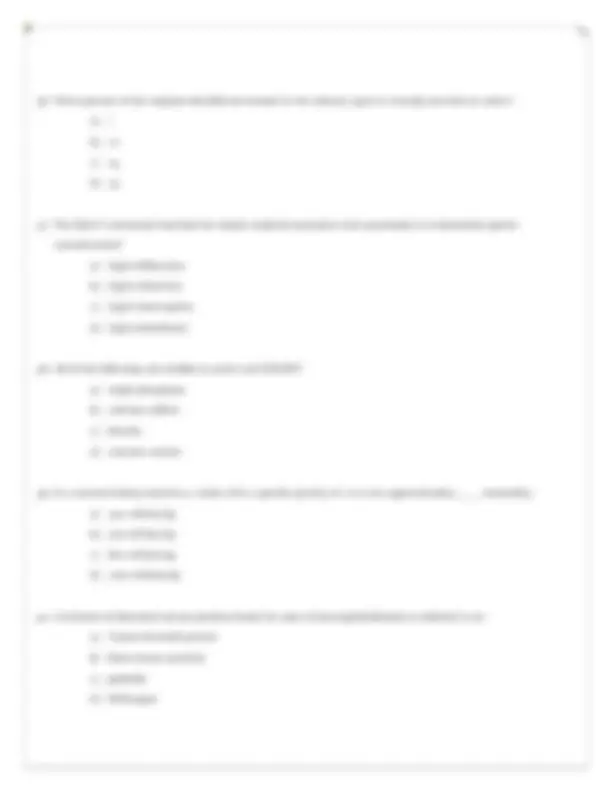
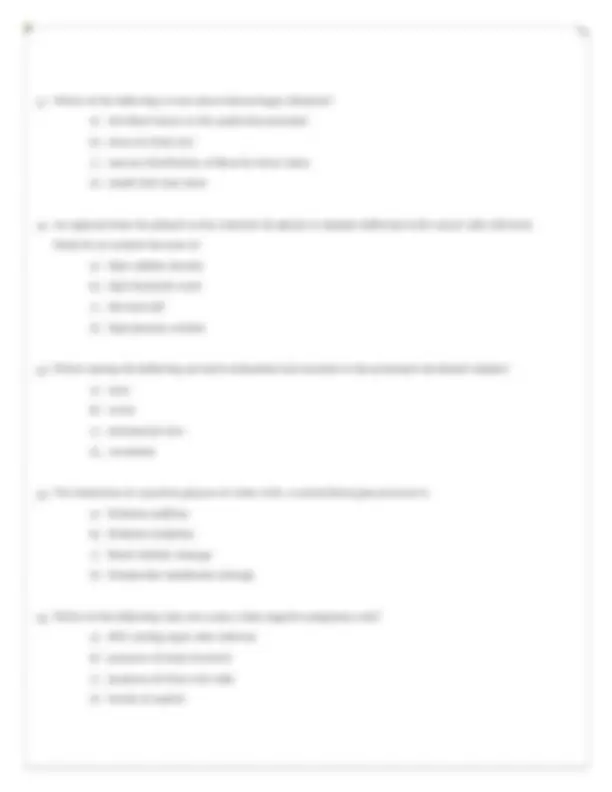
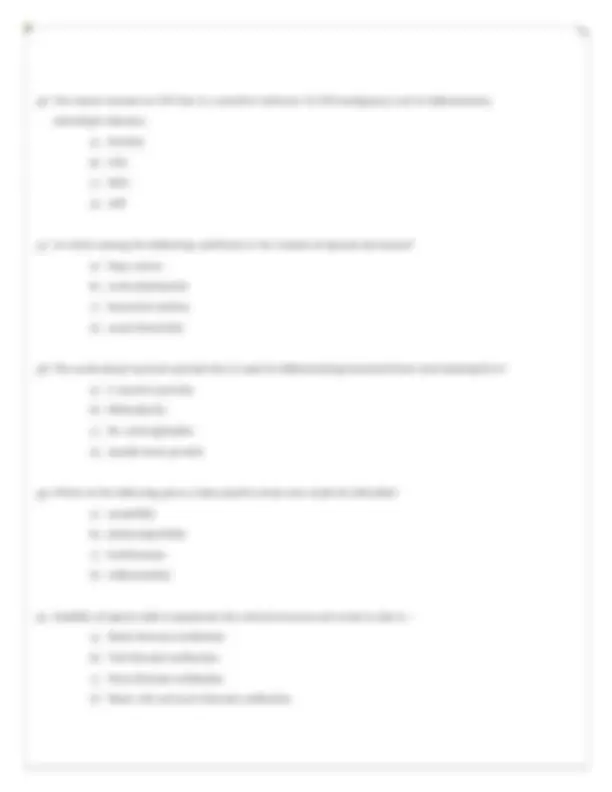
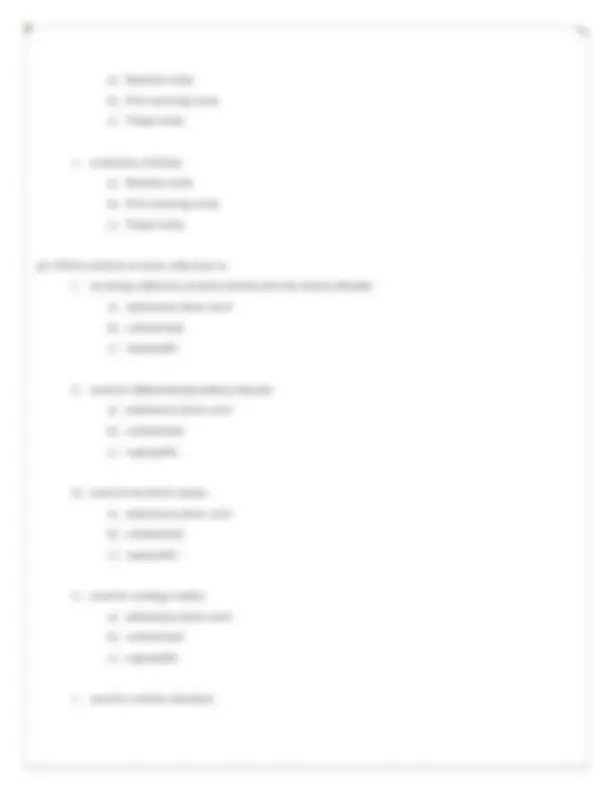
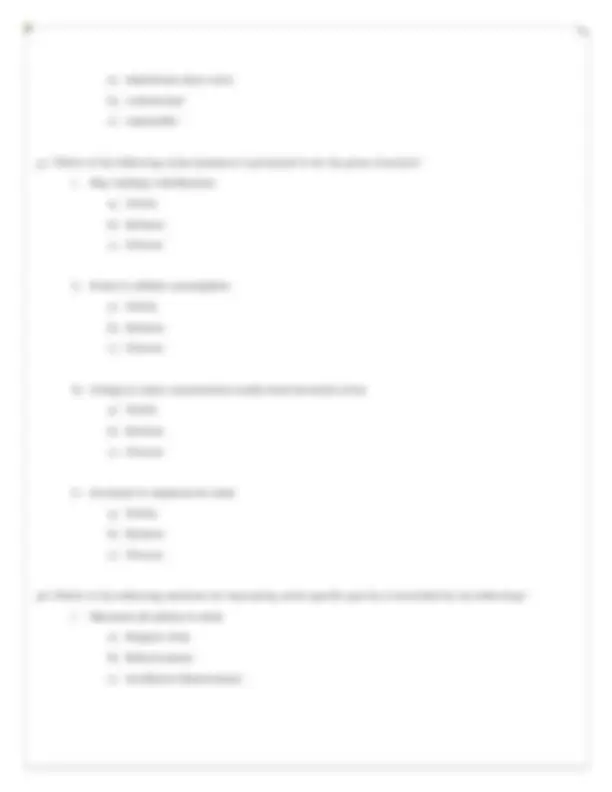
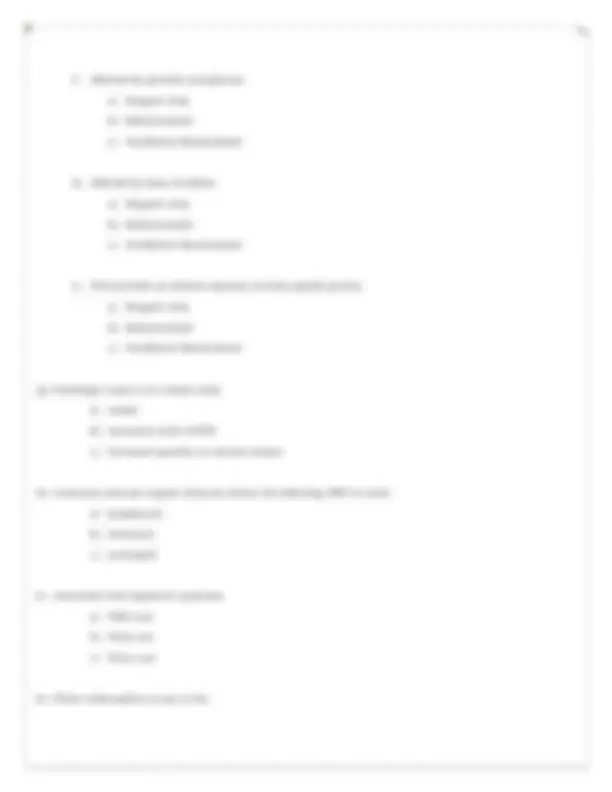
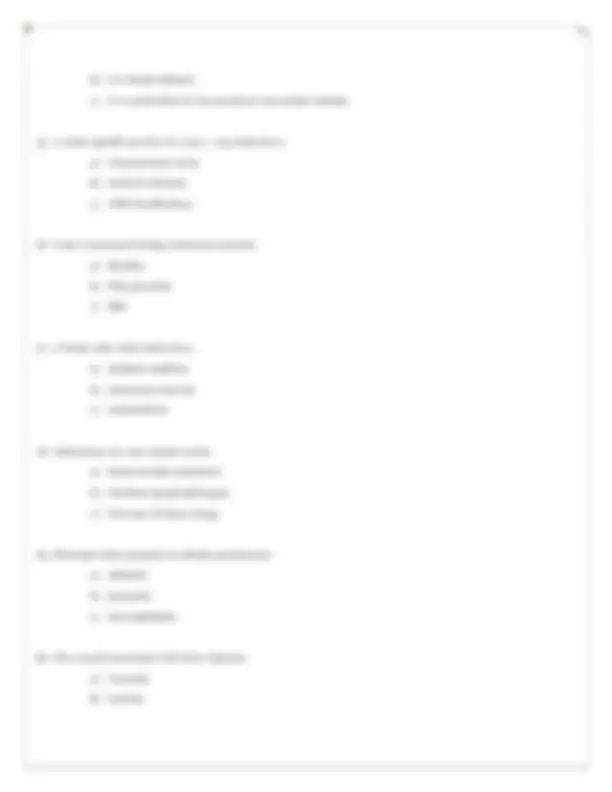
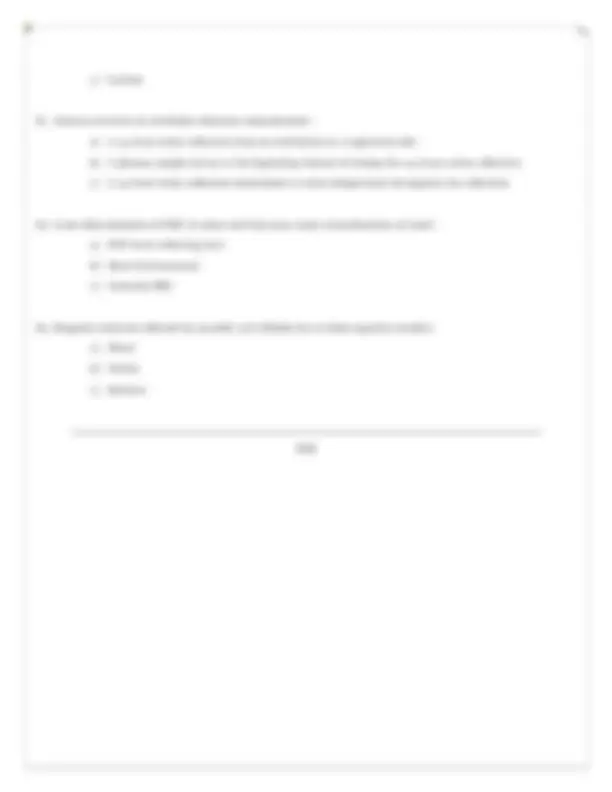


Study with the several resources on Docsity

Earn points by helping other students or get them with a premium plan


Prepare for your exams
Study with the several resources on Docsity

Earn points to download
Earn points by helping other students or get them with a premium plan
Community
Ask the community for help and clear up your study doubts
Discover the best universities in your country according to Docsity users
Free resources
Download our free guides on studying techniques, anxiety management strategies, and thesis advice from Docsity tutors
Sample questions about Clinical Microscopy
Typology: Exams
1 / 19

This page cannot be seen from the preview
Don't miss anything!












Instructions: Multiple choice. Select the BEST answer for each of the following questions.
b) gram (-) bacteria infection c) Cryptococcus meningitides infection d) open neural tube defects
b) elevated ALP in intestinal perforation c) low glucose in tubercular peritonitis d) elevated LD in rupture of the bladder
c) ascending loop of henle d) distal convoluted tubule
a) Random urine b) First morning urine c) Timed urine v. evaluation of fistula a) Random urine b) First morning urine c) Timed urine
a) midstream clean catch b) catheterized c) suprapubic
a) cortical collecting tubules b) proximal convoluted tubules c) ascending loop of henle
b) Often found in the urine of patients with multiple sclerosis c) Precipitates when urine is heated to 100 degrees Celsius and redissolves when cooled to 60 degrees Celsius
c) Cystine